Lollipopping: Cannabis Plant Technique For Bigger Buds

- 1. The meaning of lollipopping
- 2. Why do the lollipopping?
- 2. a. Sog (sea of green) and scrog
- 2. b. Lollipopping autoflowers: benefits and dangers
- 2. c. Why lollipopping outdoor plants isn’t necessary
- 3. How to do the lollipopping?
- 3. a. How to cut the unwanted growth
- 3. b. Best to start before the flowering begins
- 3. c. Do it all at once or piecemeal?
- 4. Why do genetics matter when attempting lollipoping?
- 5. In conclusion
If you don’t like to see any ‘popcorn’ buds when growing cannabis seeds, you should definitely learn the method of lollipopping (aka removing the lower branches). Lollipopping means removing bud sites and branches in the bottom part of the plant because they don’t get enough light and stay underdeveloped. You’d get better results if the plant directs its energy to the top colas, making them more fat and solid. Lollipopping non-autoflower cannabis plants just before the 12/12 flip is always worth it. Lollipopping autoflowers, on the other hand, is a bit tricky and may actually lead to smaller yields. But rest assured: the quality of the remaining buds will be top-notch. So read on to learn about the benefits of lollipopping vs not, the right timing, how to help buds get enough light and which bud sites to trim.
The Meaning of Lollipopping
To lollipop means to thin the bottom part of cannabis plants, so that all branches are completely bare down below. Now it only has several nodes on top and resembles a lollipop. Hence the term.
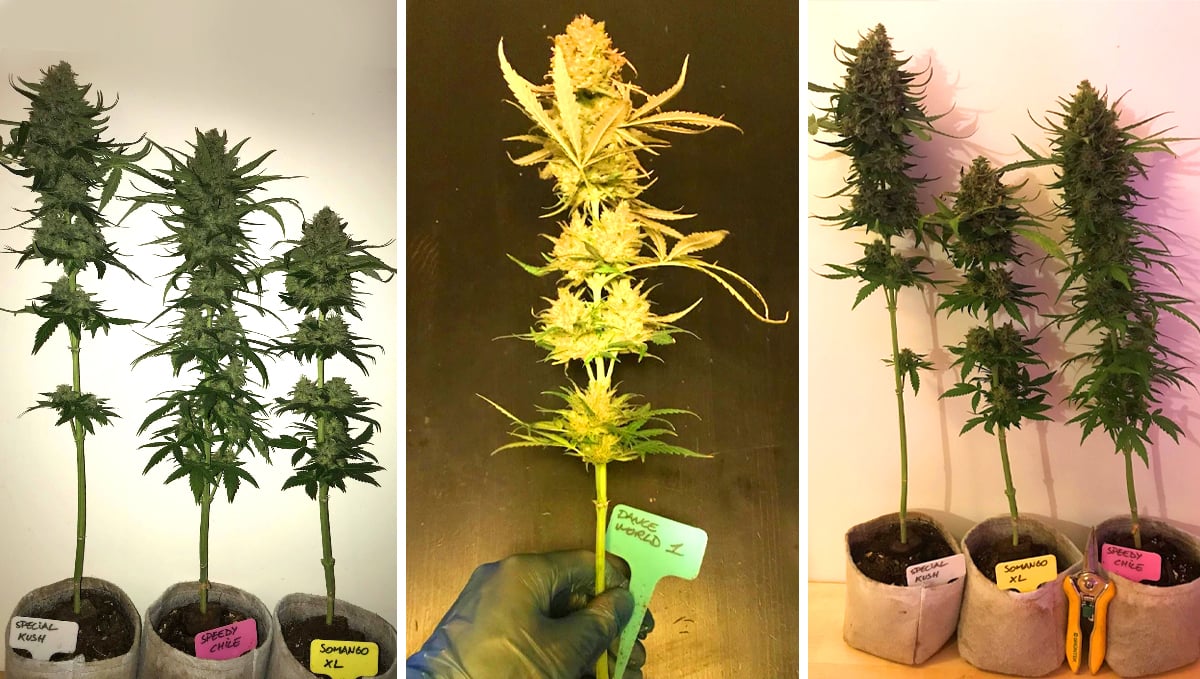
Why Do The Lollipopping?
When you grow cannabis plants indoors, the effective range of the lights you use is limited. The buds at the top receive enough energy to get big and dense, but the flowers and branches in the bottom portion are shaded from the light, or simply out of range.
Note: Even if you use the supplementary side lights, the difference between upper and lower branches is still there. It’s not only the closeness to the lights that matters, but also the position of the bud on the branch. The so-called ‘apex dominance’ makes sure that all the best things go to the tops.
Because of all that, the lower buds stay small and fluffy and have very few trichomes or none at all. When you harvest and dry them, such buds usually have zero bag appeal, low potency, and subpar flavor. It’s best to get rid of them and channel the plant’s energy elsewhere with the lollipopping technique. Lollipopping should go hand in hand with another thinning technique called pruning. Both are basically the same thing, but to prune means to remove long branches that are shaded by others or make the canopy too thick.
Leaving cannabis to grow without any intervention will still provide good results. But most growers don’t want good results—they want great ones! Cannabis plants naturally grow quite bushy, with branches emerging from the stem all the way from the bottom of the plant. Although this produces many leaves and flowers, this stacked structure can actually result in poorer and less rewarding yields. Many of the lower branches become shaded out by the thick upper canopy. The leaves that grow down there often become yellow and shriveled, and the buds that low down on the plant fail to achieve the same size and density as those with better light exposure. Lollipopping works to solve this problem by physically removing the suboptimal lower growth.
This sounds counterproductive at first, especially to beginner growers. How on earth can removing parts of a plant result in a bigger and better harvest? Well, think about it this way: All of the lower components also require a significant amount of resources in the form of nutrients and water. However, they don’t reach their full potential due to a lack of light exposure. To keep them alive and kicking, plants must distribute nitrogen, phosphorus, potassium, sugars, water, and proteins to these areas of the plant. However, removing the lower branches and leaves suddenly frees up these precious sources. Plants are then free to distribute them to areas of the plant that receive much more light. This results in enhanced growth and, ultimately, bigger and better flowers in the upper canopy.
SOG (Sea Of Green) And ScrOG
Lollipopping is a great complementary technique with any training method, be it LST or super cropping, but it is a must when you grow cannabis ScrOG-style. The idea of ScrOG is that you have a flat canopy, with all the buds at an equal distance from the light. However, the canopy in this case gets so dense that anything below the mesh is completely shaded from the light and needs to be trimmed.
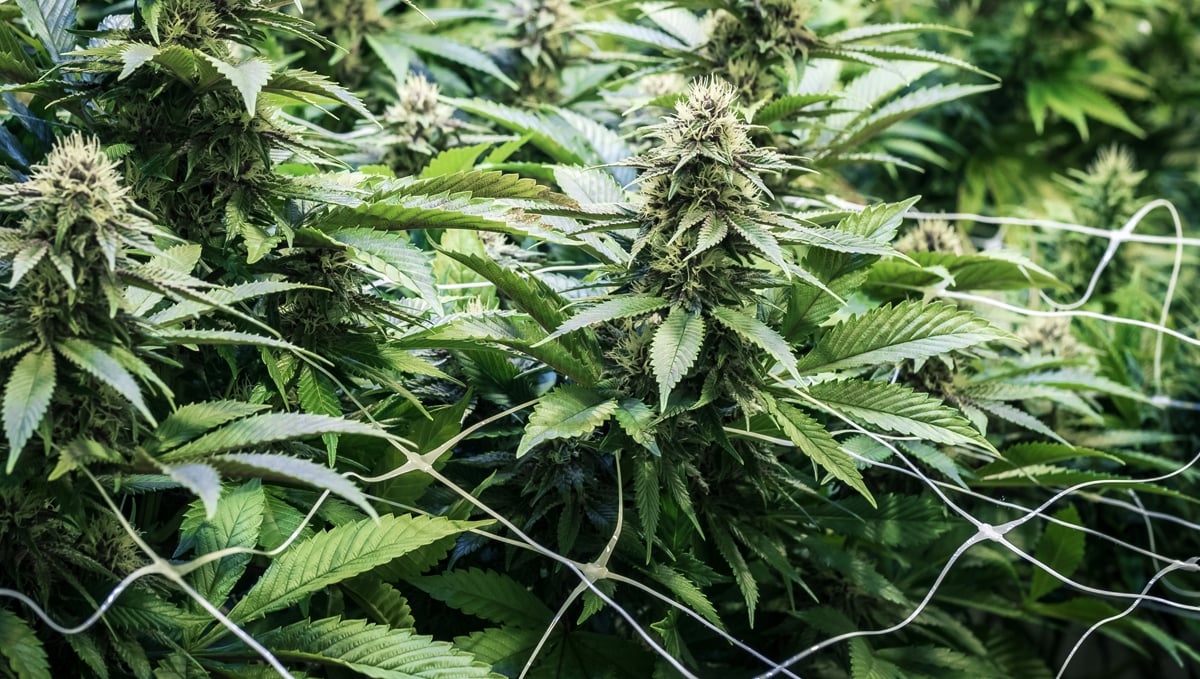
And if you grow cannabis in a SOG (sea-of-green) setup, the question of whether to use lollipopping or not depends on the height of the cannabis plants. Often, they are small enough for the lights to penetrate all the way down. So lollipopping isn’t really necessary.
Lollipopping Autoflowers: Benefits And Dangers
For photoperiod varieties grown indoors, lollipopping is a no-brainer because photoperiod cannabis plants have all the time in the world to recover from stress. As for lollipopping auto strains, you should be much more careful. If all you value is what’s on the scales, regardless of the quality of the buds, then this method is probably not for you. Lollipopping autos may cause enough stress that the overall yield will decrease. Or not.

To answer this question one should do a side-by-side grow with the same seeds and under the same conditions. The only difference should be whether you trim lower buds or not. Even if you find out that lollipopping actually led to smaller yields, the quality of the buds would be much more consistent, meaning no larf, only well-formed and solid nuggets.
So, with automatics, lollipopping may lead to the following results:
- Smaller harvests (hardly noticeable),
- Better overall bud quality (very much noticeable).
Why Lollipopping Outdoor Plants Isn’t Necessary
Outdoor cannabis plants receive light in a totally different way compared to cannabis grown indoors. When the sun travels across the sky, it shines on the plants at different angles. Thus most of the bud sites receive sunlight during the day. Of course, there’s still some difference between uppermost and lower buds because of the apex dominance (see above), but not enough to make lollipopping outdoor cannabis plants really necessary. You should practice removing lower growth for different reasons though, e.g. to prevent the accumulation of stale air closer to the ground.
How To Do The Lollipopping?
Growers who have done at least a cycle or two usually know how far down the plant they get good-quality buds. This depends on how powerful and penetrating your lights are. So remove any buds that you know would be of inferior quality. If you have no prior experience, the good rule of thumb is to trim everything in the bottom third of the plant. Some growers even trim away the lower 50%, but in this case the yields would definitely be smaller. Still, it might be a good idea for CFLs, T5s, or other lights with weak penetration. In most other cases don’t get carried away.
| CFLs, T5s, LED BULBS | HPS, LED QUANTUM BOARDS | |
|---|---|---|
| TRIM: | Bottom 50% of the plant | Bottom 30% of the plant |
| KEEP: | 3-4 nodes at the top | 5-6+ nodes at the top |
You can also do this the other way around: instead of thinking of how much to trim, you can decide on how many nodes you want to keep. Usually, growers keep intact 4-5 nodes from the top. With weaker lights, this can be as little as 3-4 nodes.
Lollipopping techniques: One-nodding
Now, lollipopping basically refers to removing the lower leaves and branches and there are several different techniques. Before reading on the basic way to lollipop your plants, let’s read a bit about how more experienced growers do it, just to give you an idea of how you can get good results no matter how and when you do it.
There is a relatively new lollipopping technique called One-nodding which also consists of removing lower plant growth but it saves you much more time and effort. With this technique, you only need to lollipop your cannabis plant the same day you change the light cycle to 12/12 but, as the name says, consists of removing all leaves up to the first node, so basically lollipop up to the last node on each branch the day you flip to 12/12. Now, we’re not saying this technique works better than any other lollipopping technique but it’s a way of showing how you can have the desired results in different ways as long as you follow the main idea, which is removing lower plant growth.
How To Cut The Unwanted Growth
You can lollipop by hand or use instruments like scissors or shears. Whatever is more convenient for you. It’s best to remove a bud site when it’s still small, meaning that the cannabis plant hasn’t yet spent too much energy on it. In this case, simply pinching off the bud site with your fingernails is the easiest way. But if the side shot to be removed is already thick or even woody, use scissors. The scissors should be clean and even sterilized with alcohol if you plan on doing multiple cuts.
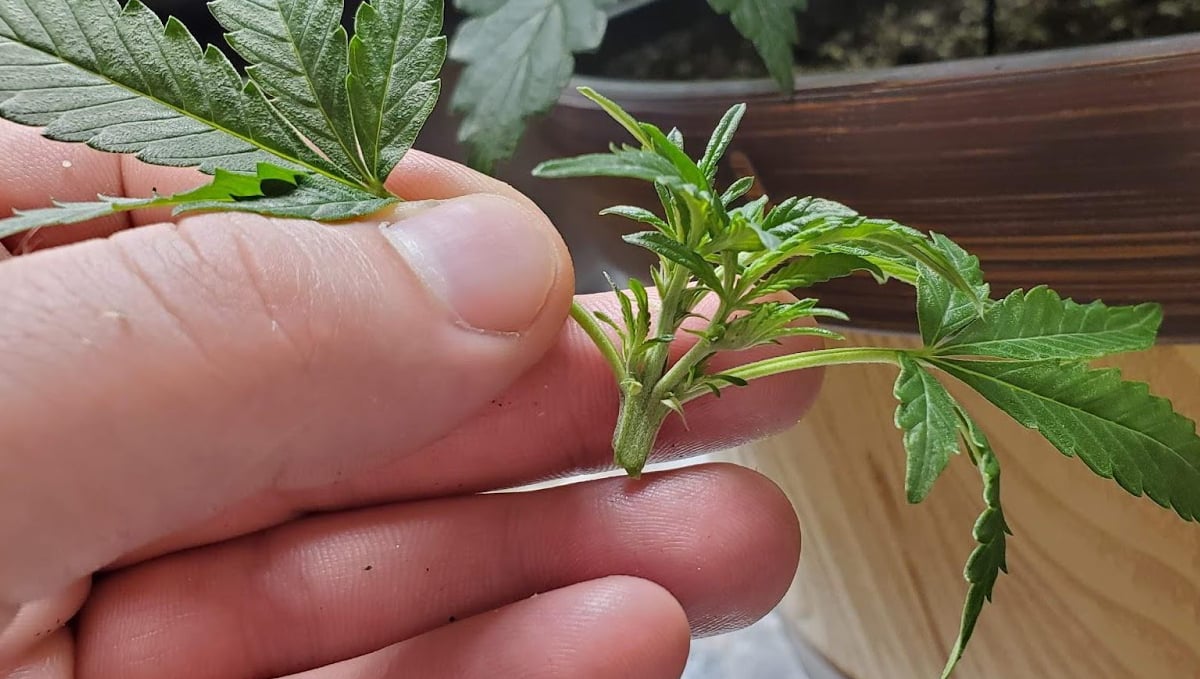
Start by removing the fan leaf as close to the stem/branch as possible. Then remove the secondary growth—the future bud site—growing from the node.
Best To Start Before The Flowering Begins
Most growers agree that lollipopping is a rather stressful technique and can slow down growth for a couple of days. It can also hurt yields if you do it wrong. So your goal is to choose the right moment when you do as little damage as possible. Generally, it’s recommended to start lollipopping at the very end of the vegetative phase. With photoperiod strains, do it 2-3 days before the flip to 12/12. And lollipopping autoflowers should be done when you see the first pistils (female hairs) at the nodes, but before the proper flowers begin to form at the tops. Later, you may find some leftovers in the bottom third of the plant which you missed. It’s okay to trim them.
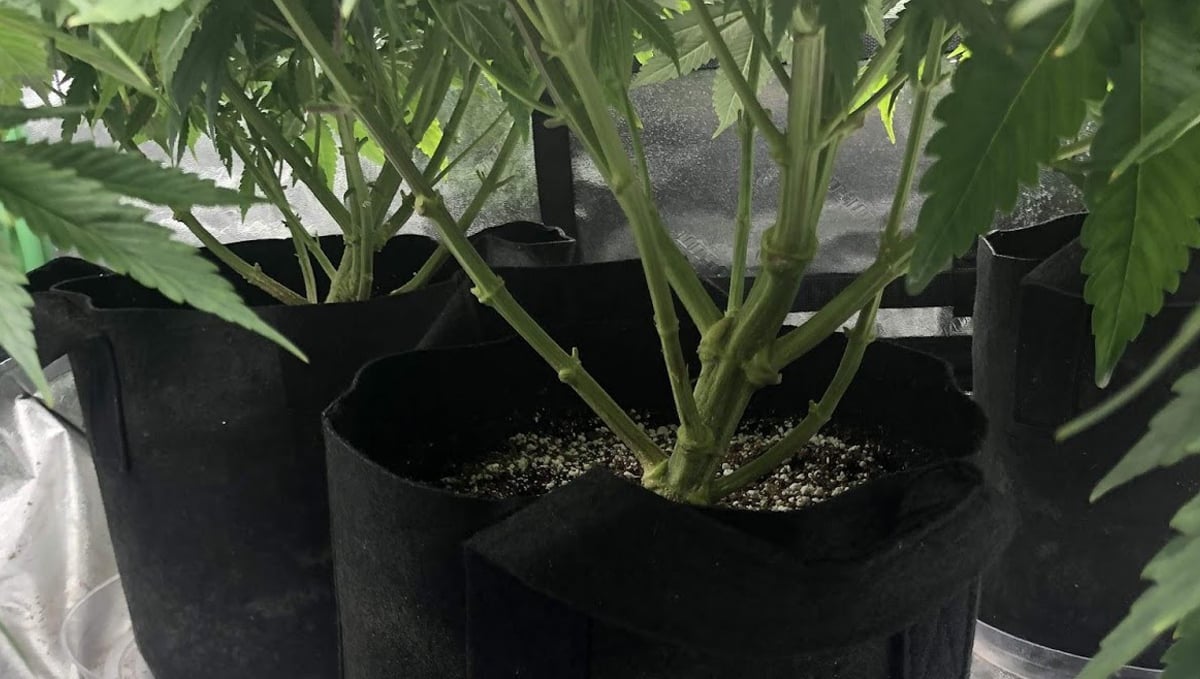
Of course, in real life, people often decide to lollipop their plants when they are already in flower and it’s obvious which buds have a potential and should be kept and which should go. So, many growers do their lollipopping in the first week of flower or 2 weeks into flower or even later. For some, it’s a standard practice.
If you read cannabis forums, you will find dozens of opinions. Some people say that the first two weeks of flowering is the most vulnerable time. So any lollipopping should be done after that: on week 3, 4. Or even after the plants have finished stretching: on week 5 or 6. Others say that the earlier you’re done with the stress of lollipopping, the better.
Don’t play guessing games! Do the lollipopping before the budding stage even begins. Let your plants focus on flowering and not on recovering from various stresses. Lollipopping in veg requires some forward thinking and skills, but it’s worth it.
Do It All At Once Or Piecemeal?
Whatever causes less stress. When lollipopping automatics, it’s safer to trim a little for starters and see how the plants react. If they don’t slow down, you can trim the rest in one go. Or you may decide to do it one fan leaf and one bud site at a time, just ensure the flowering sites get enough light. Please note that in this case, your lollipopping will extend well into the flowering stage. And this may actually cause more stress. No matter what you choose, please remember that any high-stress techniques are meant for vigorous healthy plants. And if the plants are already in shock and won’t grow, leave them alone! At least till they recover.
4. Why do Genetics Matter When Attempting Lollipoping?
The genetic makeup of your plant will always play a huge role in how your plant reacts to all stress and environmental factors, including lollipopping and all forms of pruning. As we know by now in this article, lollipopping can be quite stressful to plants, especially autoflowers. The last thing you want to do is stress an autoflower because you risk the chance of starting flower far earlier than expected, greatly reducing the yield. Even when getting enough light, unstable genetics is oftentimes why plants will react so negatively to certain training techniques which is why it is so important to pay a few extra dollars to a reputable breeder who has been doing for years like our very own genetics. There have been countless experiences in gardens where autos from different breeders could not handle the smallest amount of pruning or stressful training and ended up only yielding about 7 grams of smokable flower which is pretty much a waste of space and electricity.
But this doesn't only apply to autoflowers, there are lots of photoperiod strains with very finicky genetics. There are cases where growers have lollipopped photos after the first two weeks of flower and all became hermaphroditic due to the high-stress training which ruined our yield completely. This is just an example of why it's so important to do research into the genetics and the breeder before you purchase and start growing them. When performing this training technique it is a good idea to have more than one plant so you can do an experiment. Since all plants are not made exactly the same, the best way to see if lollipopping or pruning will work in your garden is to do a heavy lollipopping on one and leave the second plant alone. Grow each of these strains out and monitor the growth pattern you see and if the lollipopped cannabis plants are even stunted.
5. In Conclusion
Though the method of lollipopping autoflowers and photoperiod cannabis plants is hardly controversial, there are still many variables and unknowns. Don't choose a strain based on the name, look into the lineage and see what will work for you! So if you have experience with pruning or lollipopping and want to give tips on how to help flowers get enough light, please comment below!
External References
- Photosynthetic response of Cannabis sativa L. to variations in photosynthetic photon flux densities, temperature and CO2 conditions, Physiology and molecular biology of plants: an international journal of functional plant biology. Oct 2008.
- An Update on Plant Photobiology and Implications for Cannabis Production, Frontiers in Plant Science. March 2019.
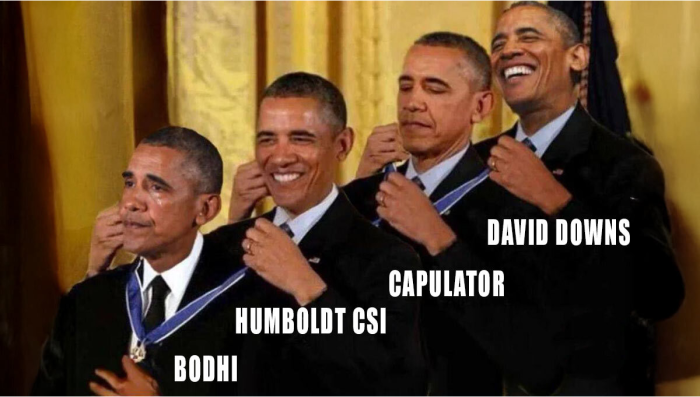







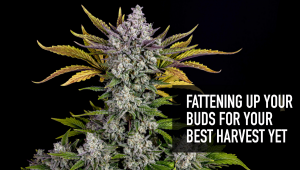
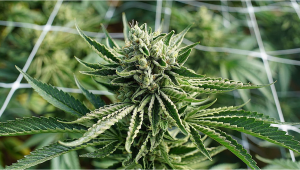
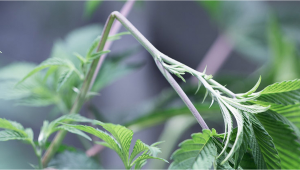
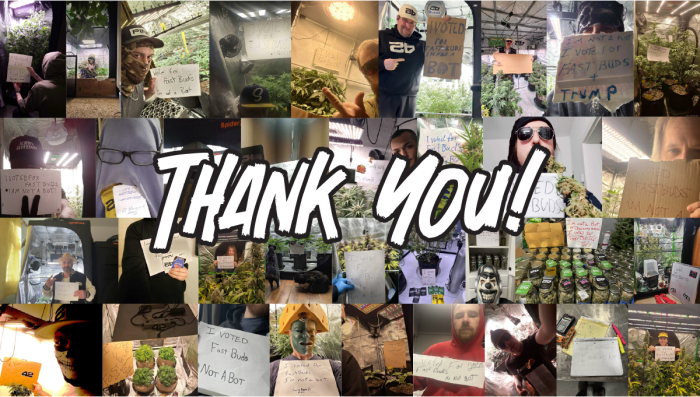

Comments